By definition, a High Rate Anaerobic Digestion Plant can effectively handle high-strength wastewater effluent streams, such as sewage sludge. To be high rate it needs to be able to provide the necessary reactions at a higher rate than traditional biogas process plant which need a 30 day retention period or longer.
Back in 2017, we reported on a high rate Anaerobic Digestion (AD) plant (see archived article below) by a company called “BioWayste” (not to be confused with the new Lebanese company of the same name). Unfortunately, that company found it hard going for whatever reason, and they are no longer trading.
To design for a higher rate of reaction than achieved in more normal AD systems is an admirable aim, but more prone to process instability.
To boost efficiency in high-rate AD processes, methane-forming microbes are immobilised and confined (some say trapped) in high-rate digesters. This is conceptually sound, but in reality, fixed films and other trapped biogas organism processes suffer due to a much higher vulnerability to transient variations in the feed water quality, and temperature.
Read on to find out more about High Rate AD:
High Rate Anaerobic Digestion (HRAD)
Definition
Solids and Hydraulic Retention Times (SRT and HRT) for the reactor are referred to as “high rate anaerobic digestion.” The average time solids and liquids are kept in the digestive process is measured in SRT and HRT. These factors are directly connected to anaerobic processes (hydrolysis, fermentation, and methanogenesis) and anaerobic reactor size.
Each anaerobic digestion reaction requires a minimum SRT to perform, and the digestion process will fail if the design SRT is less than that (Metcalf and Eddy, 2003).
Solids and hydraulic retention periods are the same in a totally mixed reactor with no recycling.
In reality, SRT values for high-rate digestion vary from 10 to 20 days (Metcalf and Eddy, 2003).
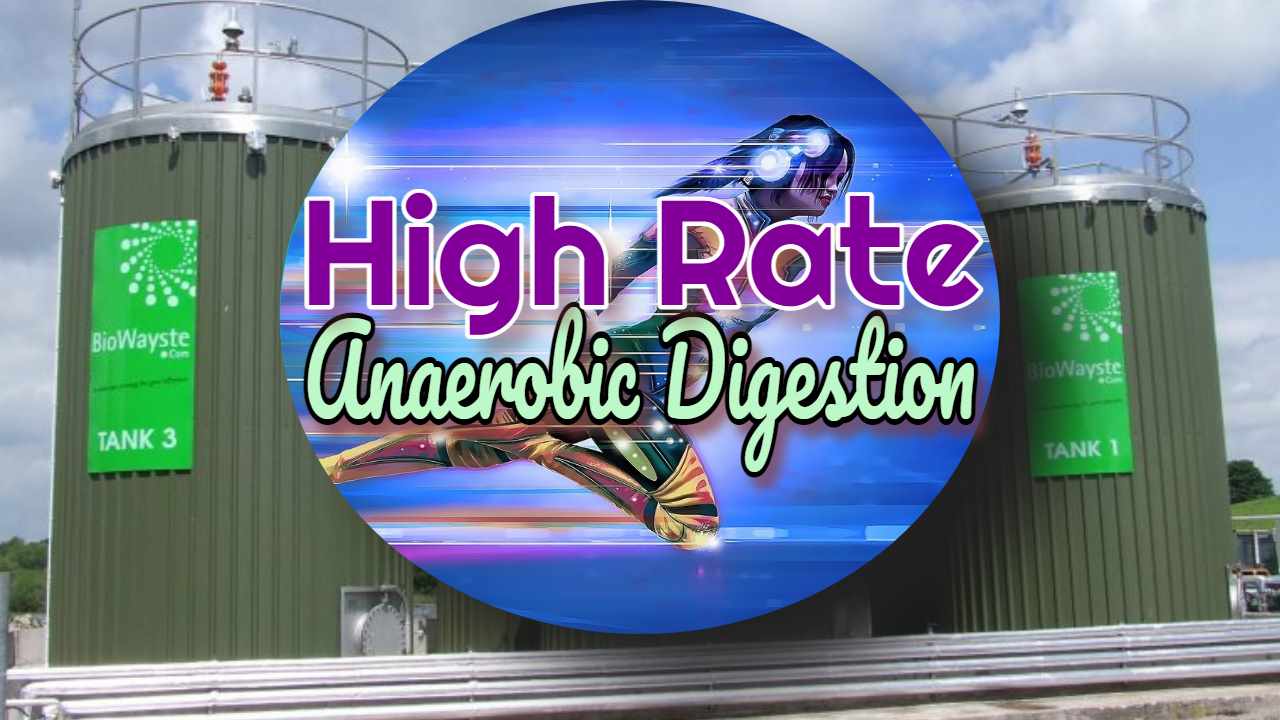
HRAD Can be Highly Efficient as it Requires Little or No Heat Energy Input
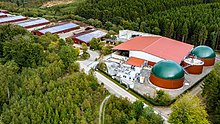
In temperate locations, where wastewaters are frequently discharged at varied temperatures typically below 20°C, high-rate anaerobic digestion (AD) is a very effective method for treating wastewaters.
Elsewhere the AD digester is commonly run at temperatures above 30°C, including requiring energy consumption of biogas.
High-rate ambient temperature AD with no temperature control is a cost-effective option that has been demonstrated at the laboratory scale. But, although its benefits in reduced costs are anxiously sought by many AD facility owners few in the biogas industry are confident enough in its reliability to be using HRAD technology.
(HRAD) of wastewater separated from grease trap waste
In a study reported in Renewable Energy, (Volume 62, February 2014, Pages 234-242), the co-production of biodiesel and methane gas from grease trap waste (GTW) was evaluated.
The GTW was first processed into two separate phases comprised of fats, oil, and grease (FOG) and high strength wastewater (GTW wastewater).
The GTW wastewater was then anaerobically digested in biochar packed up-flow column reactors to produce methane gas and a low-strength wastewater effluent while the FOG phase was set aside for conversion into biodiesel.
Anaerobic digestion efficiencies that yielded chemical oxygen demand (COD) reductions up to 95% and methane head-space concentrations between 60 and 80% were achieved along with FOG to biodiesel conversion efficiencies of 90%.
The results were very good. Methane production yields (m3 per kg COD reduced) reached theoretical maximums, with near-total depletion of the volatile organic acids. via Sciencedirect.com
Helping Microorganisms Break Down Biological Material
Anaerobic digestion (AD) is the process that helps microorganisms break down biological material without oxygen. It's commonly used in industrial or home applications to manage waste or to manufacture fuel.
Typically it's the same process as fermentation. Fermentation is the term used when manufacturing food products and drinks, organisations use the anaerobic digestion process.
Anaerobic digestion happens naturally in soil, lakes and ocean sediment In this context an aerobic activity has traditionally been defined as “anaerobic activity”.
It is also an important source of methane in marshes discovered in 1776 by Alessandro Volta. The digestion procedure begins through bacteriological hydrolysis of the input material.
What is Different About High-Rate Systems?
There are two forms of contact stabilisation digesters:
- fixed-film and
- suspended media digesters.
Contact stabilisation digesters, also known as anaerobic contact digesters, are one of the systems in question.
Some devotees of HRAD say that digestion time is usually reduced in HRAD by returning part of the active organisms to the digester. In plug flow systems, this is accomplished by pushing part of the effluent from the digester back to the front of the digester. Solids settle in an external clarifier in complete-mix systems, and the microbe-rich slurry is returned back to the digester.
However, that appears to the author of this post to be a misconception and it is usual to also do this in standard CSTR reactors which would not be considered to be “high-rate”.
Fixed Film Digesters
The following is based upon the University of Florida Dairy Research Farm's Fixed Film Digester.
A fixed film digester is simply a column filled with media such as wood particles or microscopic plastic rings. Microorganisms that produce methane thrive on the medium (the fixed film). The liquid manure passes through the medium. Attached growth digesters or anaerobic filters are other names for these digesters.
A biofilm is a slimy development that coats the medium. Fixed film digesters can have retention durations of fewer than five days, resulting in digesters that are quite tiny (have a small footprint). To ensure a continuous upward flow, wastewater is usually recycled.
Manure solids can fill the media in fixed-film digesters, which is a disadvantage and such clogging can result in a need for biogas plant cleaning. Before feeding the digester, a solid separator is required to separate particles from the manure.
The effectiveness of the system is determined by the performance of the solid separator; as a result, the influent manure concentration should be adjusted to optimum separator performance (typically 1% to 5% total solids).
Due to the removal of manure solids, some potential biogas is lost.
Suspended Media Digesters
Microbes are suspended in a continual upward flow of liquid in these digesters. Smaller particles wash away, but bigger ones stay in the digester, thanks to a change in the flow.
Biofilms are formed around the bigger particles by microorganisms, and methane formers remain in the digester. Effluent is occasionally recycled in order to maintain a continuous upward flow. Fluidized bed digesters are designs that include an artificial medium, such as sand, for bacteria to create a biofilm.
Suspended media digesters that use dung particles as attachment surfaces exist in a variety of shapes and sizes. The Upflow Anaerobic Sludge Blanket Digester, or UASB digester, and the induced blanket reactor, or IBR digester, are two typical types of suspended media digesters.
The key difference between these two systems is that UASB digesters are better suited for waste streams with a large proportion of water in them.
Archived article published in September 2017:
High Rate Anaerobic Digestion Plant Treats Wastewater Effluent Streams
A High Rate Anaerobic Digestion Plant can treat high strength Wastewater Effluent Streams including sewage sludge, very efficiently. This is an important finding due to the fact that biodegradable wastewaters contribute about 6% of all anthropogenic methane emissions.
High-rate anaerobic digesters have the potential to treat such wastewaters with a high organic loading rate while also creating renewable energy. This energy is obtained from the purified biogas, making it possible to capture methane for usage as a relatively clean power resource.
Comparison of Common Biogas Technologies
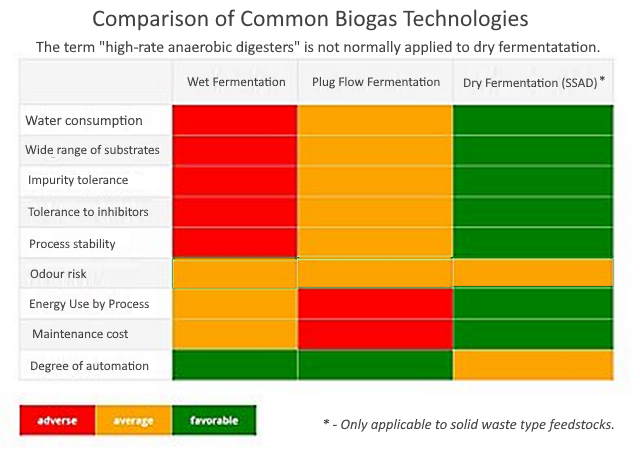
The original Press Release below marked the start of work on an early UK “high-rate” AD plant:
BioWayste’s £2M High Rate Anaerobic Digestion Plant to Treat Brocklesby Ltd Effluent Streams [Press Release – June 2013]
Update to the Original Post published in June 2013 – BioWayste failed as a company in 2014 and was wound-up, but the £2 million High Rate Anaerobic Digestion Plant to Treat Brocklesby Ltd Effluent Streams was completed. We understand that it continues to operate with an increasing demand for the fuel it produces.
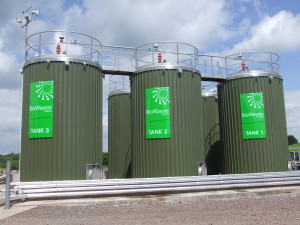 BioWayste and Brocklesby Ltd of North Cave near Hull, are delighted to announce the signing of a Build Own and Operate contract for 6 years to provide green electricity and heat from BioWayste’s £2M high rate anaerobic digestion process technology.
BioWayste and Brocklesby Ltd of North Cave near Hull, are delighted to announce the signing of a Build Own and Operate contract for 6 years to provide green electricity and heat from BioWayste’s £2M high rate anaerobic digestion process technology.
In a landmark move, Brocklesby Ltd. has chosen BioWayste as its exclusive partner to run and manage the 40,000-ton p.a. AD Plant on its 7-acre site.
Six of BioWayste’s high rate reactors along with CHP engines will provide Brocklesby with 75% of its current electricity usage, all generated from waste products currently being tankered from the site.
The BioWayste plant will make green energy by treating the waste on-site using their high rate anaerobic digestion process. They will be disposing of a clean effluent via Yorkshire Water’s infrastructure.
High Rate Anaerobic Digestion Process to Provide Green Electricity and Heat in 6 Year Contract
Rob Brocklesby, Managing Director, said:
“It makes great sense for Brocklesby to continue the process of recycling already at the North Cave Plant with BioWayste AD technology. Not only are we removing tankers from the local road infrastructure we are reducing Brocklesby Ltd’s reliance on fossil fuels by making green energy from waste on our own site. Brocklesby have invested heavily in the North Cave plant over recent years, creating many local jobs. The BioWayste plant will help our carbon reduction programme and will provide more local employment opportunities. This high rate (high loading rate) anaerobic digestion process plant will also save us money and give us long term, sustainable green energy”.
The BioWayste plant will be owned, financed and operated by BioWayste thereby allowing Brocklesby to receive a secure green energy supply from its waste. It will do this without the need to diversify from its core business. The BioWayste AD plants are small footprint installations and this one fits easily into the corner of the ever-expanding Brocklesby site.
 As the technology is a modular system of high rate reactors with high organic loading and the ability to expand the plant. This means that alongside the Brocklesby business model, BioWayste will work to service the current effluent stream. In the future, they will be able to grow in accordance with Brocklesby’s biogas production aspirations.
As the technology is a modular system of high rate reactors with high organic loading and the ability to expand the plant. This means that alongside the Brocklesby business model, BioWayste will work to service the current effluent stream. In the future, they will be able to grow in accordance with Brocklesby’s biogas production aspirations.
All of the BioWayste technology is pre-fabricated and arrives on site ready for plug & play installation, further increasing the sustainability of the total solution. Their high rate anaerobic digestion process design also reduces installation time thereby giving Brocklesby larger savings with early green electricity production.
Long Term Cost Benefits to Brocklesby – Secured Through Use of High Rate Anaerobic Digestion Process
David Orme, Sales Manager for BioWayste commented:
“BioWayste are delighted to be working with Brocklesby on this project. The Brocklesby team have chosen BioWayste for a six year partnership to make green electricity and heat from their final effluent waste. Working with other partners including the Environment Agency and Yorkshire Water, we aim to provide a fully automated and controlled service to Brocklesby using locally recruited trained operatives and management. Like Brocklesby we are committed to clean, green and sustainable energy whilst minimising the impact on the site concerned. Using AD to treat Brocklesby’s effluent stream compliments Brocklesby’s existing business model, recycling and re-using food waste products from across the UK. The main Brocklesby Plant will now be able to use green energy to assist in their already sustainable business further reducing their carbon footprint. This is excellent for both the environment and local infrastructure, giving long term cost benefits to Brocklesby without the need for them to have a further process to manage. A genuine win/win situation”.
Both Brocklesby and BioWayste assist a large number of food and beverage companies with their waste management. This high rate anaerobic digestion process plant will ensure that many of Brocklesby’s clients will know that the final destination for their waste will be in green electricity production and will only add to their whole food chain sustainability credentials. BioWayste Ltd 2014
[Article first posted September 2017. Updated January 2022.]

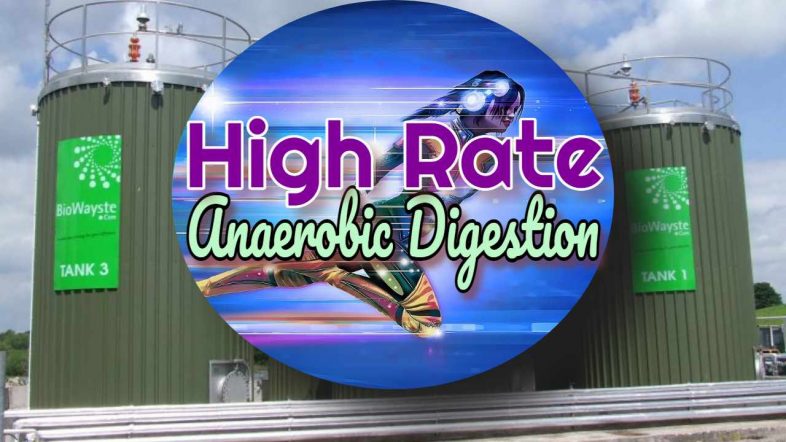



E3 has developed the AGF process that utilizes biogas for the flotation, concentration, and recycle of a concentrated bacterial biomass stream. Consequently, SRT / HRT ratios greater than three are achieved. An SRT / HRT ratio of three means that the digester size can be reduced to one third of the conventional size while achieving the same percentage solids conversion to gas. check out the linked on name above.
If some one wants to be updated with hottest technologies after that he must be pay a quick visit this website and be up to date everyday. https://www.manuremanager.com/beef/canadas-largest-biogas-plant-15093
I don’t do that much of a internet surfing to be
honest but your site is really nice. Keep it up giving us more like this!
I’ll be and bookmarking your website Will come back sometime down the
road. Cheers
Expensive toys for the farm boys! All sounds good but £2 million. That’s an investment.
This whole thing works best when the site has its own waste source to feed the facility with biomass. It should work very well.
Aw, this was a really nice post. Finding the time
and actual effort to make a great article… but what
can I say… I hesitate a lot and never seem to get anything done.
[Supplied link has been deleted as it did not work/ showed a “not found” error.]